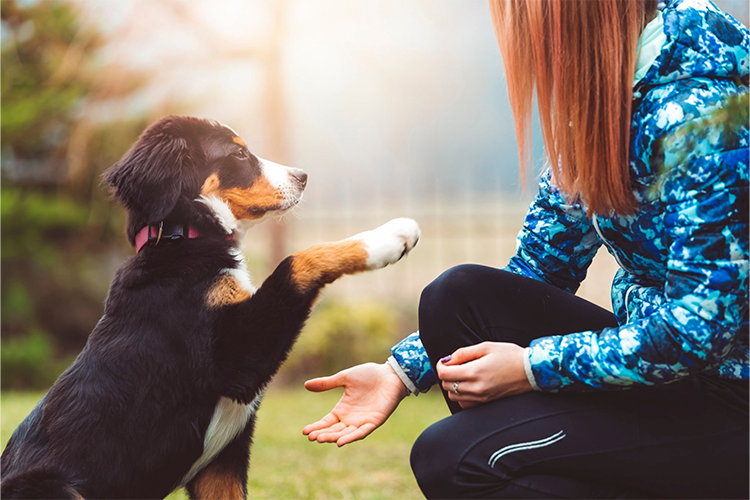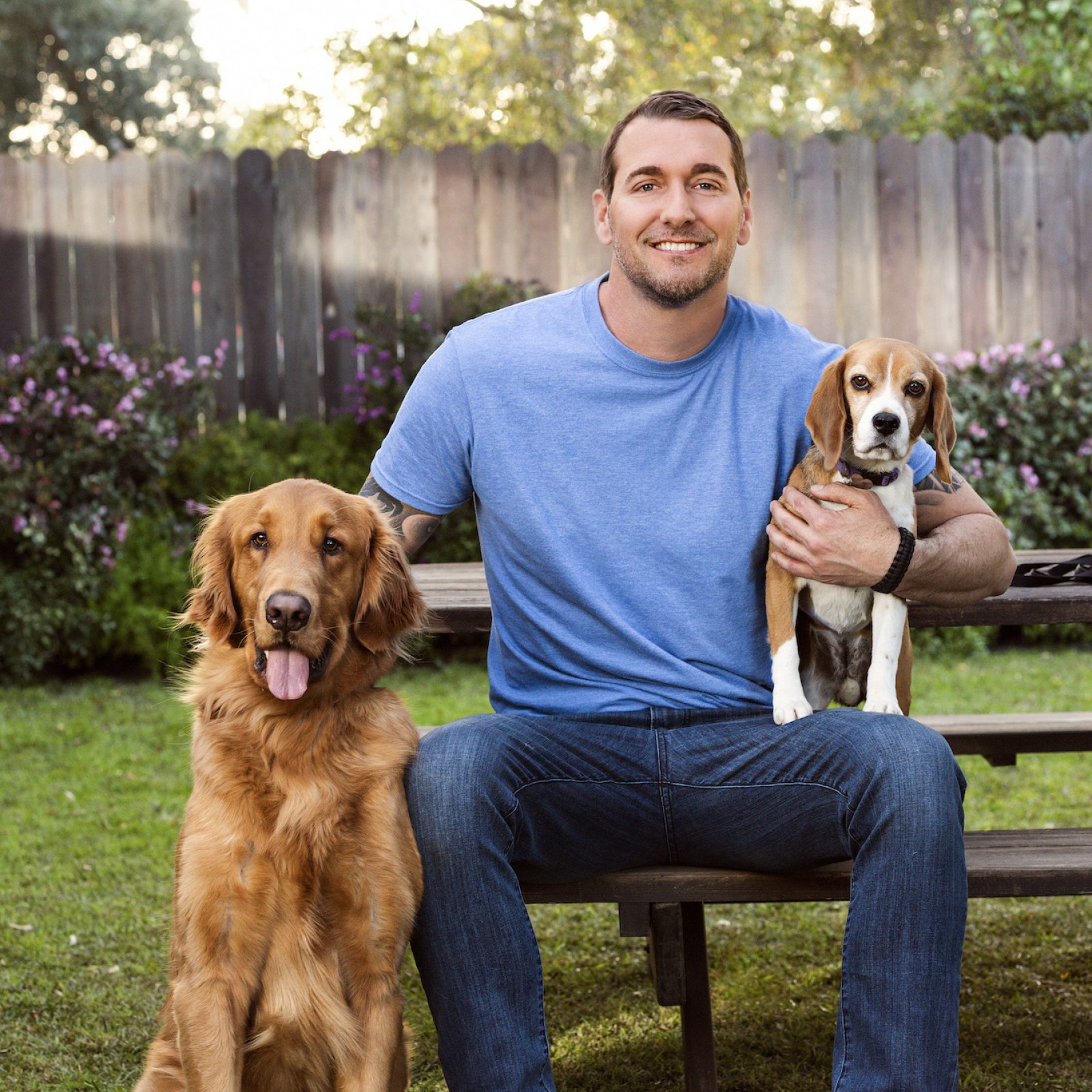Fun Tasks to Enhance Your Dog Training Experience
Wiki Article
Necessary Tips for Effective Dog Training: A Guide for Animal Owners
Efficient pet dog training is a complex procedure that requires a calculated strategy customized to both the pet dog's temperament and the owner's goals. Secret elements such as developing regular commands, using favorable support, and promoting very early socialization play critical roles in fostering a well-adjusted canine companion. Numerous pet proprietors encounter obstacles that can prevent development, leading to irritation and unpredictability. Recognizing just how to navigate these obstacles can significantly improve the training experience, eventually changing the relationship between owner and pet. What are the crucial approaches that can be employed to ensure success in this undertaking?Understanding Canine Behavior
Understanding canine behavior is important for efficient training and cultivating an unified connection in between pooches and their owners. dog training. Dogs connect mainly with body language, vocalizations, and actions, making it vital for proprietors to translate these signals accurately.
Socialization plays a substantial function in canine behavior; direct exposure to various atmospheres, people, and other animals can dramatically influence a pet dog's personality. Additionally, factors such as type characteristics and individual personality must assist training approaches, as some breeds may have details behavioral traits that require tailored methods. By understanding these elements, proprietors can develop a helpful environment that encourages favorable actions, bring about successful training outcomes and a much deeper bond with their pets.
Developing Consistent Commands
Effective communication with your pet starts with establishing regular commands. This fundamental component of training is important for cultivating understanding between you and your pet. Uniformity in the commands you make use of makes certain that your dog can reliably link particular words or expressions with the preferred behaviors.When selecting commands, pick clear, unique words that are very easy to say and separate from one another. Prevent utilizing similar-sounding commands that may puzzle your canine. For example, making use of "sit" and "stay" is ideal, however "sit" and "struck" might cause misunderstandings.
Furthermore, keep the same tone and quantity for every command. Canines are delicate to vocal hints, so varying your tone can produce confusion.
It is equally important to guarantee that all relative are on the exact same web page relating to the commands made use of. A united front in command use will certainly protect against blended signals and enhance the knowing procedure.
Favorable Reinforcement Techniques
The power of favorable reinforcement in dog training depends on its capacity to encourage wanted habits via benefits and appreciation. This technique is grounded in the concept that behaviors complied with by positive results are most likely to be duplicated. By integrating favorable support right into your training program, you can successfully form your canine's actions in a useful way.To apply favorable support, it's necessary to identify what inspires your dog, whether it be treats, playthings, or spoken appreciation. When your dog carries out a desired action, such as remaining on command, immediately award them with a reward or love. This organization in between the command and the favorable end result strengthens their understanding.
It's essential to timing the incentives appropriately; providing the reinforcement within secs of the wanted habits aids your dog make the connection (dog training). Furthermore, uniformity is vital-- make certain that all member of the family utilize the same commands and incentive systems to stay clear of complication

Progressively, you can reduce the frequency of deals with as your pet dog learns the habits, transitioning to applaud or periodic rewards. This method not only cultivates a strong bond in between you and your pet however also advertises a favorable understanding environment, making educating an enjoyable experience for both.
Socialization and Communication
Constantly revealing your pet dog to a selection of atmospheres, people, and various other pets is crucial for their social growth. Socializing needs to begin early, preferably during the critical home window of 3 to 14 weeks, when pups are most receptive to brand-new experiences. However, older canines can also profit from continuous socialization efforts.Present your pet to different setups, such as parks, pet-friendly stores, and urban areas. This direct exposure assists them adapt to different stimuli, decreasing stress and anxiety and worry feedbacks. Urge favorable interactions with other dogs and individuals, guaranteeing that these encounters are regulated and risk-free to foster confidence.
Make use of organized playdates with courteous dogs, as this can improve your dog's social abilities and educate them proper behavior. Obedience courses and training sessions also give outstanding chances for socialization, permitting your canine to connect with others in a supervised setting.
Screen your canine's body language during interactions, as this will certainly aid you assess their comfort degree. Slowly raise direct exposure to even more tough circumstances while ensuring that each experience is positive. A well-socialized pet is most likely to exhibit well balanced habits, making them a delight to have in any type of setup.
Dealing With Usual Training Challenges
Every canine proprietor will certainly run into training challenges at some time, no matter their dog's age or socialization level. Determining usual issues such as stubbornness, interruptions, and terror can aid in establishing reliable strategies for enhancement.
Gradually introduce distractions as the pet comes to be a lot more skillful in commands. Short, constant training sessions are additionally efficient in preserving attention.
Terror can prevent a pet's knowing procedure. Gradual desensitization to the source of concern, coupled with positive support, can aid alleviate anxiety. Patience is vital; never ever require a pet dog right into a situation that causes distress, as this might intensify the issue.
Inevitably, understanding and attending to these typical challenges with an organized technique will cultivate a much more efficient training experience, strengthening the bond in between canine and proprietor while promoting effective knowing.
Final Thought
In summary, effective pet dog training relies upon a comprehensive understanding of canine actions, the establishment of regular commands, and the application of favorable reinforcement methods. Socialization plays an essential duty in establishing well-adjusted pet dogs, while attending to usual training difficulties calls for perseverance and versatility. read this article By implementing these necessary strategies, family pet owners can foster a solid bond with their dogs and promote preferable behaviors, inevitably resulting in an unified partnership between people and their canine friends.Understanding pet dog actions is vital for reliable training and fostering a harmonious connection in between canines helpful resources and their proprietors.Socializing plays a significant function in pet dog actions; direct exposure to numerous settings, individuals, and other animals can considerably affect a canine's personality.The power of favorable support in dog training lies in its ability to motivate wanted behaviors through benefits and praise. By integrating positive reinforcement right into your training regimen, you can efficiently shape your canine's habits in a useful way.
In summary, successful canine training relies on a thorough understanding of canine actions, the establishment of consistent commands, and the application of positive reinforcement techniques.
Report this wiki page